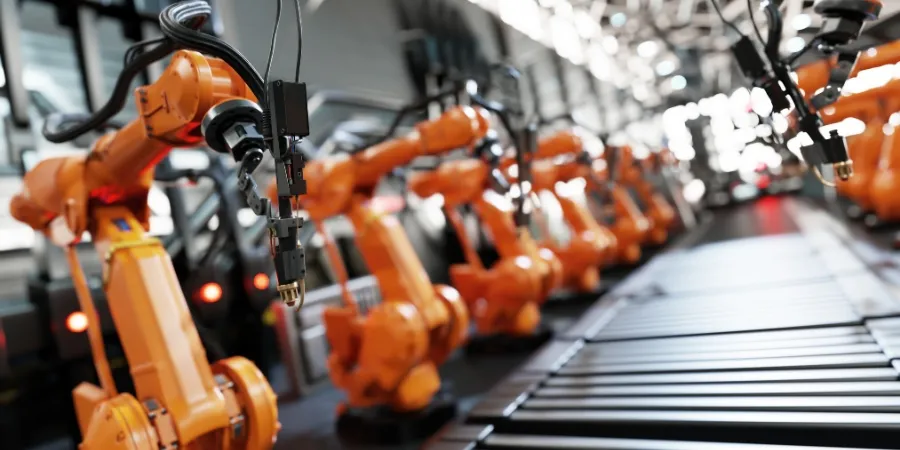The New Automated Workforce
Introduction
Full automation, a future for industry that seems just around the corner. With such a looming change, questions and fear arise to combat this new outlook on human society. Many are concerned by a dystopian like takeover of AI, humans becoming the second rate in comparison to the workforce and command of the new robot world. Others describe a utopia, where work is no longer required since everything is automated and easy. To stamp out the fires of speculation, Dr. Jay Richards presents a better, more realistic way to think of the future. He colors these ideas as inspiration from popular literature and entertainment, drawing attention to more factual based speculation. Dr. Richards, in his brief presentation over his book, breaks down the accurate thought process to take with this full automation discussion.
Philosophy Behind the Fear
In the utopian versus dystopian ideas of the full automated future, there is common belief that both agree on. This common belief, as Dr. Richards illustrates, is the concept that humans can be and will be replaced by machines. The work humans do will be replaced and humans will be deemed, by both thought processes, useless. Whether mankind is conquered or served does not matter. In this new future, humans are not useless, providing less than an automated system. Dr. Richards asked for reflection on this idea and what the philosophical belief behind it could be. He points out that there is a philosophical idea snuck into these two arguments, which is not usually purposeful but the groundwork to why these arguments gain any support. In these scenarios, humans are essentially flesh machines. All our process can be replaced with that of a plastic or metal system. The difference in humanity is the real meat behind this philosophical idea. If someone believes that humans are just an evolved set of processes, that will mean that scientifically humans are technically able to be recreated. Those processes could be redesigned and put into a metallic body. Hence, all functions of humans good be replaced, even their reasoning. However, if someone believed humans were created by a supernatural force, such as God, then humans’ existence is technically supernaturally based. Humans were not created by science alone, and such cannot be recreated. With this other philosophical belief, the fear of machine takeover does not actually seem like a possible occurrence. That would require a creator at the same magnitude and power of God.
Automation and New Jobs
According to Dr. Richards, there is no fear of being had in the replacement of jobs by automation. The oncoming age of automation is in its own way a form of creative destruction. To illustrate creative instruction, Dr. Richards presented the way Uber replaced taxis in many big cities in America. The company Uber created a service which allowed the customer to request a driver via phone. The drivers could be people who signed up on the Uber site. This allowed the process of being to be much easier than the original option of taxi drivers. Essentially, the taxi industry was destroyed. However, many of the taxi drivers found jobs as an Uber driver after the failure of their industry. Many people might see all these lost jobs in the taxi driver industry, but what they don’t see is that many of these taxi drivers repurpose their skills to be Uber drivers. The same thing would happen with automation. As jobs become more automated, the people being replaced will either repurpose their skills or learn a new skill to find a new job. To expand on this idea, I want to bring up the Lump of Labor Fallacy, an important point that Dr. Richards brought up I his presentation. Based on this fallacy, there is a belief that there is only a certain amount of work needing to be done. However, this is false. For example, if a robot replaced a human in a bakery, there would now be a knew job in overseeing this and many other robots who run several other bakeries. However, if that job is automated, future problems will arise that need human attention. The Lump of Labor Fallacy operates under the perception that perfection can be achieved. “If I could just get a robot to do my work than I wouldn’t have,’ is a statement that is unaware of the work that goes into that work. Now there needs to be someone who repairs and checks on the robots. We do not operate in a perfect world.
The True "Fear" of Automation
As I said before, there is no fear in the replacement of jobs with automation. The real fear is in the rate of jobs being replaced. As Dr. Richards said, we are now being transported in the age of intelligence, where jobs now require activities with an intelligence agency. This means operation in the digital world with bits instead of the physical with molecules. However, there are some people who are caught in the middle of this. Many employees out there are too old or far down in their given career to learn new skills to change into a new career service. With the rate of change, many of these people cannot find jobs in their current field. This is the actual fear behind automation. It’s hard to prepare for this change. As Dr. Richards said, it’s hard to predict what future jobs will be needed or obsolete. The future is unpredictable. The best way we can help other people prepare is by informing them. Make sure the future generation is aware of the shifting of the market. Help those who are being replaced finding jobs for their skills. However, it is not a perfect process. Creative destruction destroys, and inevitably people get caught in that destruction. It is our job to get the most benefits and mitigate the negatives.
